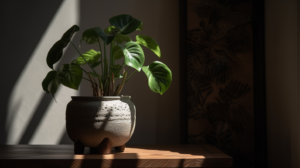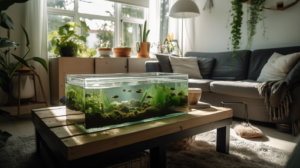Beginner's Guide to Indoor Gardening
Start Your Green Haven Today
Indoor gardening is an increasingly popular way to bring the beauty and benefits of nature into your home. Whether you’re a busy urban dweller or simply lack outdoor space, indoor gardening is an excellent way to enhance your living environment and well-being. In this beginner’s guide, we’ll cover the basics of indoor gardening and provide you with the tools and knowledge to start your green haven today.
Why Choose Indoor Gardening?
There are several reasons why people choose to start an indoor garden. Some of the main benefits include:
- Limited outdoor space: For those living in apartments or small homes, indoor gardening provides a way to enjoy the benefits of gardening without access to a yard or patio.
- Year-round gardening: Indoor gardens aren’t subject to seasonal changes, allowing you to grow plants and enjoy their beauty throughout the year.
- Improved air quality: Indoor plants can help purify the air by removing harmful toxins and increasing oxygen levels.
- Mental well-being: Gardening is a therapeutic and rewarding activity that can help reduce stress and improve mental health.
Essential Indoor Gardening Tools
To start your indoor gardening journey, you’ll need a few essential tools and supplies. Here’s a list to help you get started:
- Containers: Choose pots or planters with drainage holes to prevent overwatering.
- Potting mix: Select a high-quality, well-draining soil mix designed for indoor plants.
- Watering can: A small watering can with a narrow spout is ideal for precise watering.
- Fertilizer: Look for a balanced, slow-release fertilizer formulated for indoor plants.
- Pruner or scissors: Keep a pair of sharp pruning tools on hand for trimming and maintaining your plants.
- Grow lights (optional): If your home doesn’t receive enough natural light, consider investing in grow lights to provide the necessary spectrum for plant growth.
Choosing the Right Plants for Your Indoor Garden
Selecting the right plants for your indoor garden is crucial for success. Here are a few factors to consider when choosing plants:
- Light requirements: Make sure your plants receive the appropriate amount of light based on their needs. Some plants thrive in low light, while others require bright, indirect sunlight.
- Space constraints: Consider the size of your plants at maturity and ensure you have enough room for them to grow.
- Maintenance needs: Some plants require more care than others. Choose plants that match your level of commitment and experience.
Types of Indoor Gardens
There are countless ways to create a beautiful and functional indoor garden. Here are some popular indoor gardening styles to inspire your green haven:
- Vertical gardens: Make the most of your limited space by installing a vertical garden on a wall or using hanging planters.
- Windowsill gardens: Take advantage of natural light by setting up a windowsill garden with small plants that thrive in bright, indirect sunlight.
- Edible indoor gardens: Grow your own herbs, salad greens, or even small fruiting plants like cherry tomatoes or strawberries for a sustainable and delicious indoor garden.
- Japanese-inspired gardens: Create a Zen serene and calming space with elements of Japanese gardening, such as bonsai trees, moss, and simple, clean designs.
- Terrariums: Craft miniature, self-contained ecosystems in glass containers to bring a unique and low-maintenance touch to your indoor garden.
Popular Indoor Gardening Plants for Beginners
Here are some popular indoor plants that are perfect for beginners:
Low-Light Plants
- Snake Plant (Sansevieria)
- Spider Plant (Chlorophytum comosum)
- ZZ Plant (Zamioculcas zamiifolia)
- Heartleaf Philodendron (Philodendron hederaceum)
- Chinese Evergreen (Aglaonema)
Edible Plants
- Herbs: Basil, Mint, Parsley, Cilantro, Chives
- Leafy Greens: Spinach, Lettuce, Kale, Arugula, Swiss Chard
- Microgreens: Radish, Broccoli, Mustard, Pea, Sunflower
- Cherry Tomatoes
Easy Care Plants
- Pothos (Epipremnum aureum)
- Peace Lily (Spathiphyllum)
- English Ivy (Hedera helix)
- Jade Plant (Crassula ovata)
- Rubber Plant (Ficus elastica)
Caring for Your Indoor Garden
Once you’ve set up your indoor garden, it’s essential to provide proper care to ensure your plants thrive. Here are some essential indoor gardening tips:
- Watering: Overwatering is a common issue in indoor gardening. Be sure to water your plants only when the soil is dry to the touch and ensure proper drainage to prevent root rot.
- Fertilizing: Feed your plants with a balanced, slow-release fertilizer according to the package instructions, usually every 4-6 weeks.
- Pruning: Regularly trim dead or yellowing leaves and branches to maintain your plants’ health and appearance.
- Pest control: Keep an eye out for pests like aphids, spider mites, and fungus gnats. Treat any infestations with appropriate methods, such as insecticidal soap, neem oil, or sticky traps.
- Lighting: Ensure your plants receive the appropriate amount of light based on their specific needs. Rotate your plants occasionally to ensure even growth and exposure to sunlight.
- Humidity: Many indoor plants originate from tropical environments and may require higher humidity levels than your home naturally provides. Use a humidifier or place a tray of water near your plants to increase humidity.
- Repotting: As your plants grow, they may eventually outgrow their containers. Repot your plants into larger pots when their roots begin to outgrow the current container, or when the plant shows signs of stress, such as yellowing leaves or stunted growth.
Beginner's Indoor Gardening FAQs
1. What are some easy-to-grow indoor plants for beginners?
There are several low-maintenance indoor plants that are perfect for beginners. These include:
- Snake Plant (Sansevieria)
- Pothos (Epipremnum aureum)
- Spider Plant (Chlorophytum comosum)
- Peace Lily (Spathiphyllum)
- ZZ Plant (Zamioculcas zamiifolia)
These plants are forgiving and can tolerate various light levels and watering schedules, making them ideal for those new to indoor gardening.
2. How do I choose the right location for my indoor plants?
When selecting a location for your indoor plants, consider the following factors:
- Light: Assess the light conditions in your space and choose plants that will thrive in those conditions. Some plants require bright, indirect light, while others can survive in low light.
- Temperature: Most indoor plants prefer temperatures between 65-75°F (18-24°C). Avoid placing plants near heating or cooling vents, as this may cause temperature fluctuations.
- Humidity: Many indoor plants prefer higher humidity levels. You can increase humidity by misting plants, placing them near a humidifier, or grouping plants together.
3. How often should I water my indoor plants?
Watering frequency depends on the specific plant, its location, and the size of its container. As a general rule, allow the top 1-2 inches of soil to dry out between waterings. Overwatering can lead to root rot, which is a common cause of plant death. Keep in mind that plants in smaller pots or in bright light may require more frequent watering than those in larger pots or low-light areas.
4. What type of potting soil should I use for my indoor plants?
Choose a high-quality, well-draining potting mix for your indoor plants. Many indoor plants thrive in a mix that contains peat moss, perlite, and vermiculite. You can also find specialized mixes designed for specific plant types, such as succulents or orchids. Avoid using garden soil, as it may not drain well and can harbor pests and diseases.
5. How do I fertilize my indoor plants?
Fertilize your indoor plants with a balanced, water-soluble fertilizer diluted to half-strength. Apply the fertilizer every 4-6 weeks during the growing season (spring and summer) and reduce the frequency during the dormant period (fall and winter). Some plants may have specific fertilizer requirements, so it’s important to research the needs of each plant in your collection.
6. How can I prevent pests and diseases in my indoor garden?
To prevent pests and diseases, follow these best practices:
- Inspect new plants for pests before bringing them home.
- Quarantine new plants for 1-2 weeks to ensure they are pest-free.
- Maintain proper watering habits to prevent overwatering or underwatering, both of which can stress plants and make them more susceptible to pests and diseases.
- Keep the leaves and surrounding area clean to prevent the buildup of dust and debris that can harbor pests.
- Prune dead or diseased leaves and stems to prevent the spread of pathogens.
- Provide adequate airflow around your plants by spacing them properly and using a fan if necessary.
- Monitor your plants regularly for signs of pests or diseases, and treat them promptly using natural remedies or chemical treatments when necessary.
Related Articles


